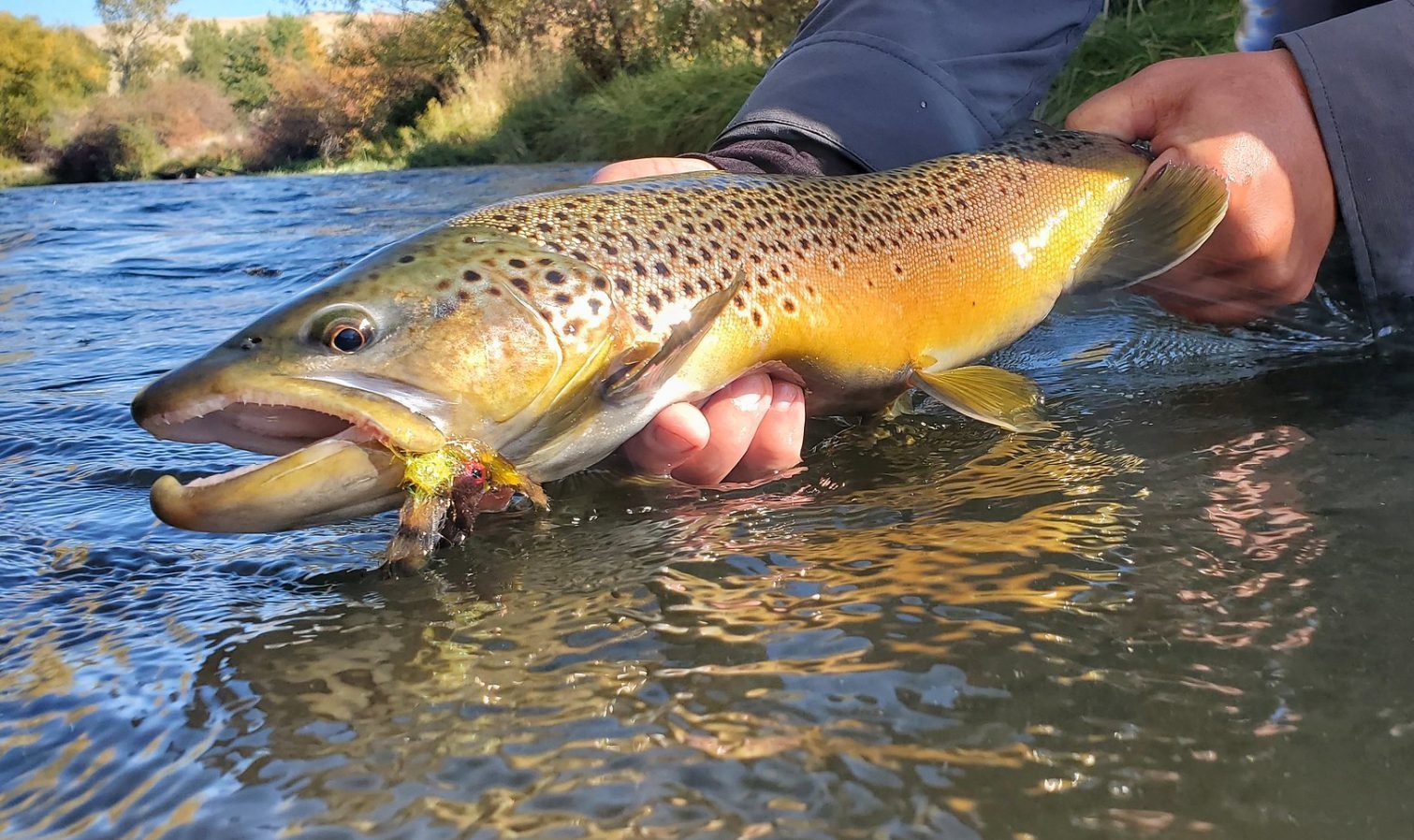Early Autumn Trout Tactics

Image by Mike Doughty
As the first cold nights of autumn leave their first frosty kisses on the grass and leaves begin to change from green to fluorescent oranges, reds, and yellows, we trout anglers begin to get excited. Cooling water temperatures bring new life to the river. Trout become more active as they feed heavily preparing for winter or, depending on the species, as they prepare to spawn. Whether you’re a dry fly purist, a streamer junkie, or someone who just likes to catch trout anyway you can, early fall has some of the best opportunities to land a ton of trout or even the fish of a lifetime.
Fall Hatches
While mayflies, caddisflies, and stoneflies are generally associated with spring and summer, as water temperatures drop in the fall all three of these species become more active. Since trout are also beginning to feed more frantically in preparation for winter, you can actually have better fishing when targeting these hatches than you would during the more traditional times of year.
The blue wing olive (BWO) is probably the most common mayfly species across the United States and is extremely active in the fall. BWOs are smaller size 16 to 22 insects usually dark olive or bluish-gray. They’re a bad weather insect, typically hatching during heavy cloud cover, wind and rainstorms. Your best bet for finding them is slower-moving water directly below riffles in the early afternoon and evening. Fall trout feeding on BWO’s can be particular about patterns in low, clear water. It’s often best to fish two different dry fly patterns at once, such as a traditional BWO pattern with a Comparadun or a Crippled Emerger as a dropper, until you key in on exactly what stage of insect the trout are targeting.
Caddisflies are less prevalent in the autumn than other times of the year, but the ones that do hatch in fall usually attract a lot of attention from trout. Principle among these fall caddis species is the October caddis. These larger size 10 to 16 bugs are usually dark brown to bright orange. Although you’ll rarely find enough of them in one place to cause a feeding frenzy, the insect’s large size makes them an excellent target of opportunity. You can fish October Caddis patterns traditionally by drifting them through pools and slow runs, but you’ll often have better luck skating them across fast riffles or twitching them rapidly in pockets of slow water around rapids. You’ll want to use large caddis patterns during the fall such as the Stimulator and the Outrigger Caddis.
Though there won’t be a lot of topwater action when fishing stonefly patterns in the fall, the big juicy nymphs crawling around the bottom can be hard for fall trout to resist. During autumn, stoneflies are usually found in the center of the river where they swim and feed in deep pools and off the edges of gravel bars, large boulders, and other points of structure that block current. Nymph these pools with multiple patterns and sizes at once, such as a Pats Rubberlegs paired with a Beadhead Stonefly as a dropper or a Rubberleg Stonefly matched with a small Beadhead Stonefly Nymph to make sure you’re covering all your bases on the drift.
Early Fall Streamer Fishing
Though early fall streamer fishing isn’t booming like late fall and early winter, it can still be a great trout producer. Early fall trout are looking to feed heavily so small baitfish like sculpins, chubs, and smelt, are high on their menu. However, instead of fishing the large, gaudy, and brightly colored streamers you normally associate with aggressive fall trout fishing, try using smaller, more realistic patterns. Small streamers like the Autumn Splendor, Zonkers, and Wooly Buggers can be great early autumn producers.
Stripping streamers along the bank is a tried and true classic streamer fishing method, but in the early fall when the water is shallow and trout are spending more time in the center of the river, your time may be better-spent fishing where the fish are. Try stripping streamers in the middle, targeting buckets and large boulder piles where trout are most likely to be hunting. The tips of islands and gravel and sand bars are great spots to target with stripped streamers as well.
Mixing and Matching
One of the best things you can do to catch trout in early fall is adapting and adjusting your fishing strategies. Sticking to one hatch, one streamer pattern, or one fishing style just because you believe it will work is the fastest way to get skunked, put your fly rod away, and end up spending your early fall picking out a new sweater and drinking pumpkin spice coffee.
When you’re fishing large caddis patterns, fish them with a dropper, such as a Beadhead Pheasant Tail or a Lightening Bug. Instead of exclusively stripping your streamer patterns, try swinging them through deep runs or at the bases of riffles. When you’re swinging, you can also tip your streamers with a soft hackle that imitates one of the fall insects, doubling your chances for a hook-up.
That’s the real trick to early fall trout fishing—covering your bases. You only have a short window of truly good trout fishing before the icy face of winter bares its teeth and makes your time on the water all the harder. Fish in as much water with as many fly patterns and techniques as you can. For these lovely, cool days of catching trout surrounded by autumn splendor are the final truly good days you may have on the stream until spring. Do your best to make them last.










